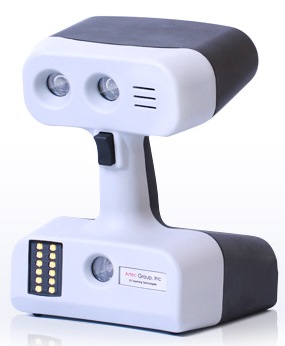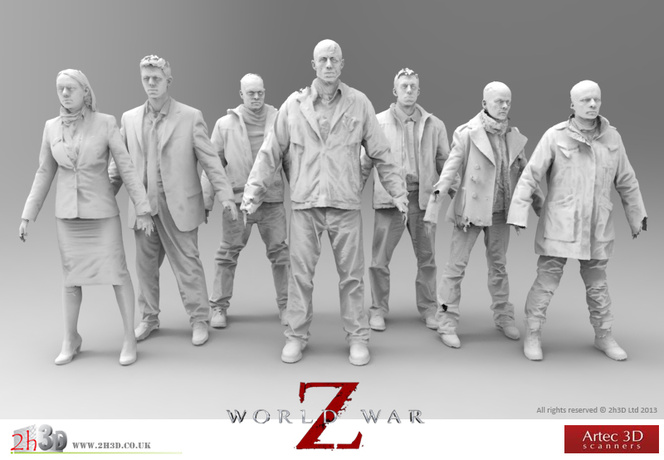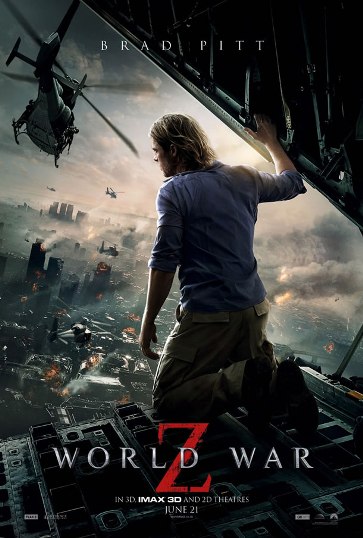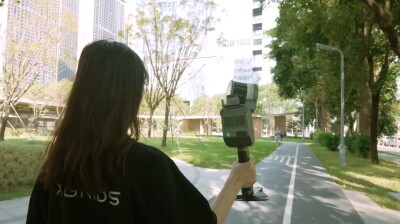Artec Group’s short-range scanners touted as ‘only feasible option’
World War Z, the new apocalyptic horror movie starring Brad Pitt, has already grossed over $460 million worldwide since its June 21 opening. Building on that success, the film was digitally remastered into the IMAX 3D format for a one-week U.S. release starting Friday.
To digitally capture the production’s assets – including sets and locations, bodies, costumes, vehicles and props – 3D imaging firm Artec Group’s handheld scanners and software were used to digitize the actors and their costumes, the movie’s weapons, and multiple baggage items for the plane crash scene.
The film, directed by Marc Forster and based on the 2006 Max Brooks’ novel of the same name, stars Pitt as Gerry Lane, a former UN investigator who traverses the globe to stop a zombie pandemic threatening to destroy humanity.
UK-based 2h3D http://www.2h3d.co.uk/ Ltd., a 3D laser scanning and services firm for film and television, whose credits include the Harry Potter and Sherlock Holmes movies, was approached by the movie’s visual effects (VFX) department during pre-production to discuss digitally capturing about 100 assets used in the movie.
“Considering the quantity of scanning subjects, the numerous locations, the cramped areas we were expected to set up in and the often narrow set-up and capture window, Artec scanners were the only feasible option,” said Guy Hauldren, 2h3D director and the movie’s head of scanning. “With a plug-and-play USB interface and no calibration they are the perfect tool to use in the often chaotic world of film production.”
The scanning process
For scanning, one Artec MHT (for heads/faces and props) and one Artec L (for bodies) were used in conjunction with a motorized turntable. Capture of each performer took less than five minutes and head scans were done in less than a minute.

The Artec MHT
2h3d allocated two days for processing/editing of each full body, including merging the higher resolution head scan with the body data. The time to process depended on how still the subject stood and how complex the outfit was.
Artec Studio software was then used to process and edit the scan data before exporting the fused model into other software for post-processing and poly-sculpting.

Headquartered in Luxembourg, with an office in Palo Alto, Calif., Artec said it asked 2h3d why they chose an Artec scanner, and here is their reply:
- Portable. Both of their scanners (MHT + L) fit into a single, regular-sized camera bag taken aboard a plane as hand-luggage, so their equipment is never at the mercy of airport baggage handlers.
- No complicated setup. No calibration before scanning and plug-n-play approach, allows them to start scanning as soon as they get to the set.
- Large jobs are not a problem. The software is smart: it uses multi-thread and 64-bit processing. This means that it can deal with large amount of data.
- Scanning humans is easy. Artec Studio comes standard with the “non-rigid alignment” feature. This algorithm helps the operator come up with a quality human-body scan even if the subject was moving during scanning.
- Scans dark/black objects. 2h3d scanned close to 200 subjects in 5 locations. Each one was in a costume and the scanners were able to scan each one, regardless of their color or glare, as traditionally, 3D scanners have trouble scanning black and shiny objects.
- Ambient light – not an issue. Unlike other scanners that 2h3d tried, Artec scanners are not bothered by ambient light. This means that they didn’t have to build an expensive, special set for 3D scanning. This saved a lot of money and time.






